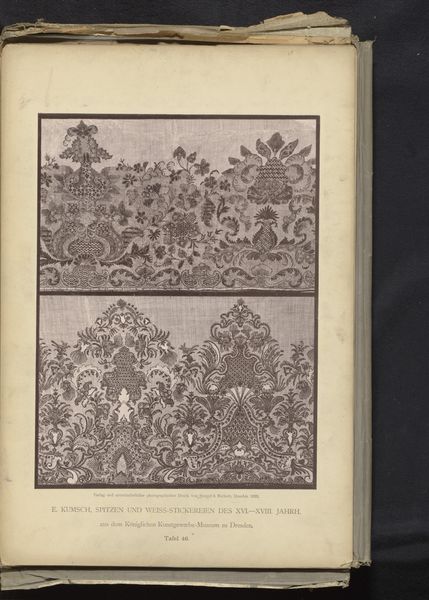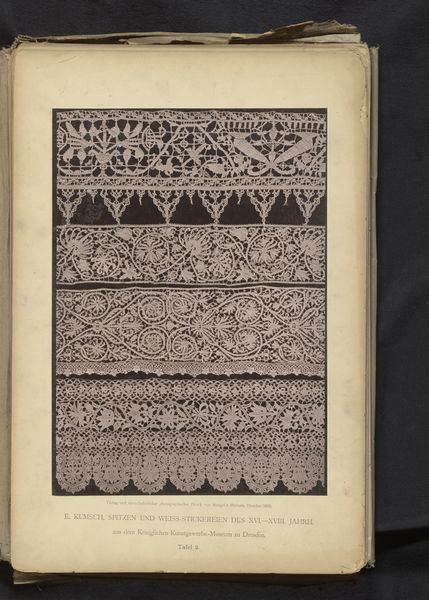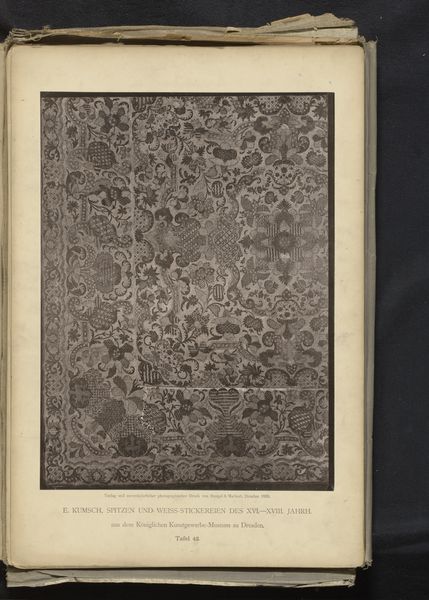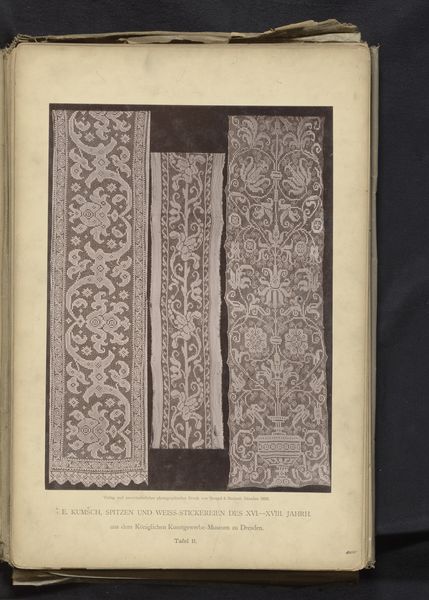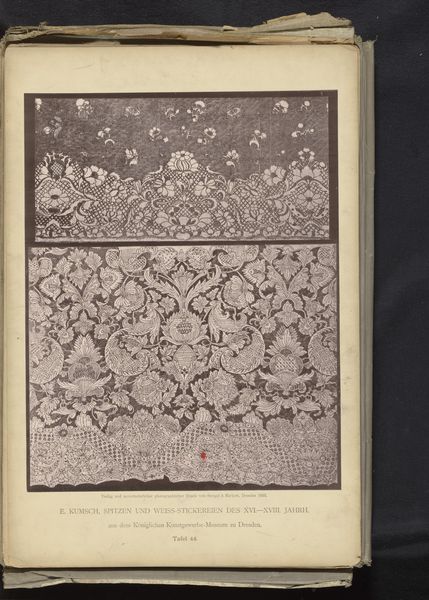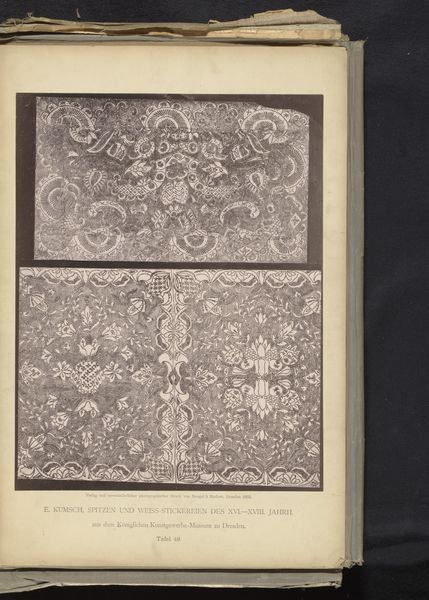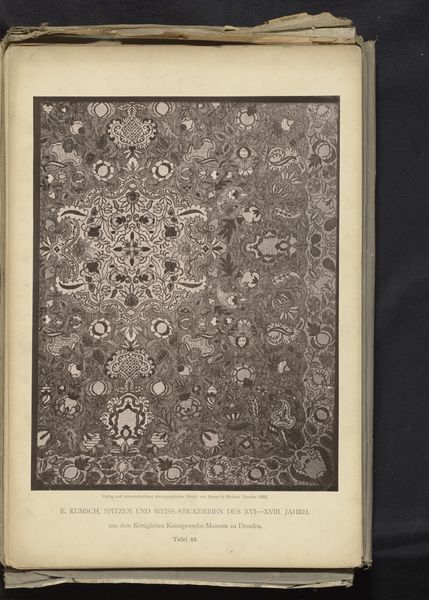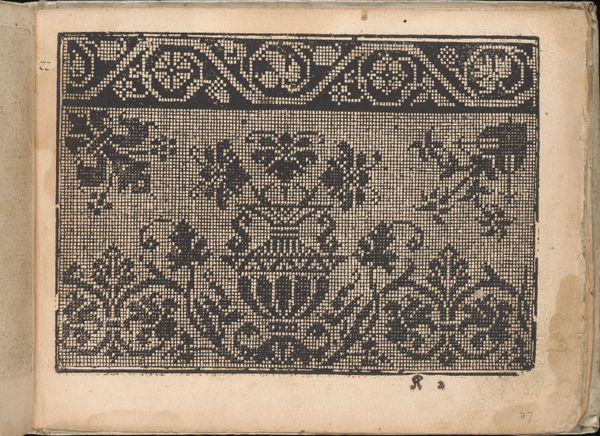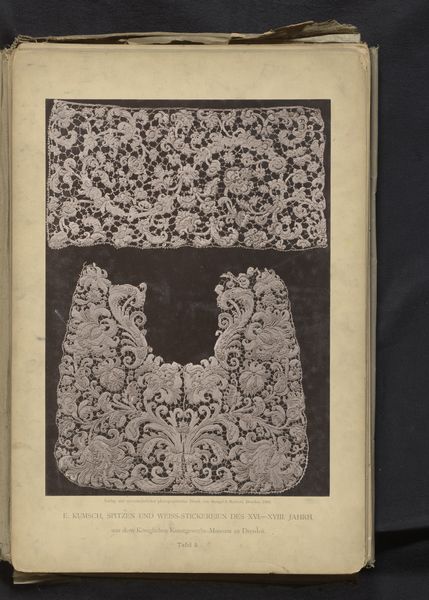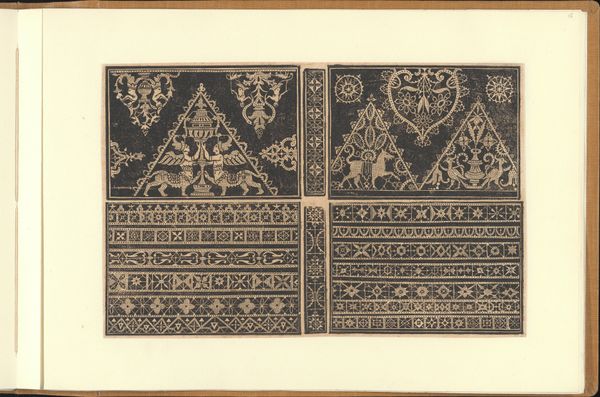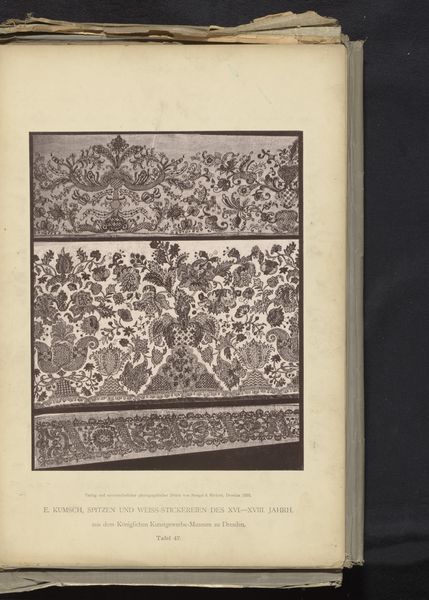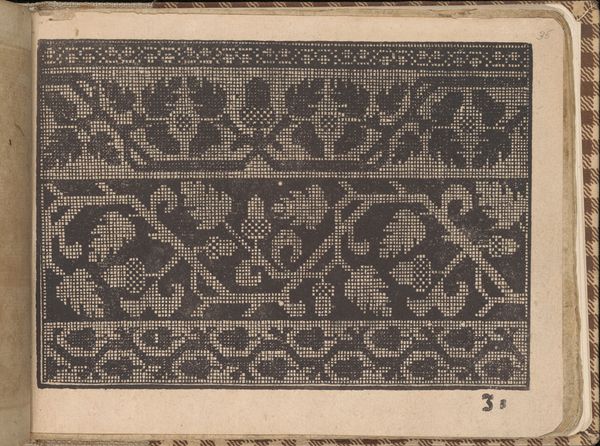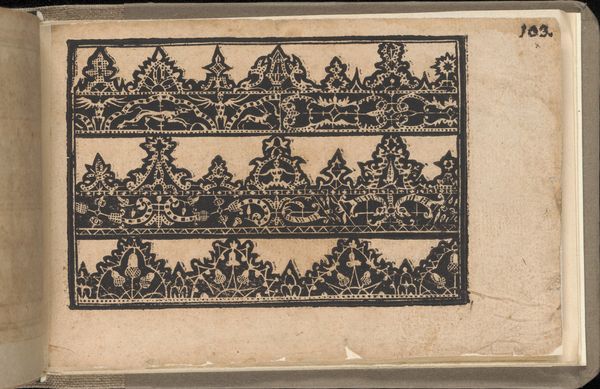
Twee stukken 18de-eeuws Duits borduurwerk uit de collectie van het Kunstgewerbemuseum in Dresden, Duitsland 1888
0:00
0:00
graphic-art, print, textile, engraving
#
graphic-art
# print
#
textile
#
engraving
Dimensions: height 361 mm, width 277 mm
Copyright: Rijks Museum: Open Domain
Curator: Before us, we have a fascinating piece, “Twee stukken 18de-eeuws Duits borduurwerk uit de collectie van het Kunstgewerbemuseum in Dresden, Duitsland,” which translates to "Two pieces of 18th-century German embroidery from the collection of the Kunstgewerbemuseum in Dresden, Germany." The print you see here at the Rijksmuseum dates back to 1888. Editor: It's quite intricate, isn't it? Even in this printed form, you can sense the delicacy of the original needlework. There's an almost ghostly quality to the floral patterns and complex arabesques. Curator: Indeed. The late 19th-century reproduction allows us to consider the value placed on preserving and disseminating these traditional textile designs. The Kunstgewerbemuseum, founded in the late 19th century, was intended to preserve, but also celebrate craft traditions. Editor: That makes me think about the skilled labor involved in both the original embroideries and the subsequent engraving process used for its reproduction. You can't overlook the hours of patient, meticulous work it would have taken to create these. And consider, who were the makers of the original 18th-century textiles and who did they do it for? Curator: Typically, embroidery like this, especially of such quality, would have been commissioned by or created for the aristocratic or wealthy merchant classes. Textile arts were central to displays of status and taste, and demonstrated the sophistication of the ruling classes. These textiles likely adorned clothing, household linens, or were even framed as art. Editor: It's a far cry from today's mass-produced textiles, isn’t it? Examining objects like these really highlights the change in textile production over the past centuries. Curator: Precisely. And in a world where handcrafts were increasingly threatened by industrialization, publications such as these helped to preserve them through popularizing the art and promoting institutions, such as the one in Dresden, who worked to conserve the originals. Editor: I like how we see here, even in a reproductive print, the power that lies within the humble craft, that transcends medium and resonates even through time. Curator: Absolutely. And understanding its cultural context helps us to appreciate the artistic, historical, and social forces that helped shape our world today.
Comments
No comments
Be the first to comment and join the conversation on the ultimate creative platform.
